#shinsaku fujita
Text


Here's an internet first to celebrate my forty-first birthday: I submit to you the complete illustrations SCEJ used as cover art for the Japanese editions of Siren and Siren 2, created by Shinsaku Fujita. Uncropped. No logotypes. No text.
#siren#forbidden siren#shinsaku fujita#artwork#cover art#illustration#scej#playstation 2#survival horror#j horror#japan studio
907 notes
·
View notes
Text
[PDF] Organic Chemistry of Photography Professor Dr. Shinsaku Fujita (auth.)
In conventional color photography, spect...
https://pdfelite.com/product/pdf-organic-chemistry-of-photography-professor-dr-shinsaku-fujita-auth/?feed_id=4578&_unique_id=662dd3f6eb38d
0 notes
Photo
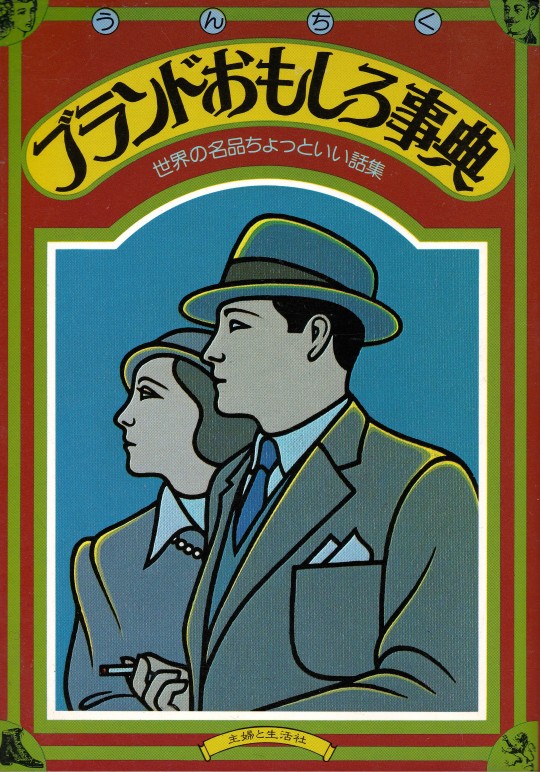
ブランドおもしろ事典 主婦と生活社・編
主婦と生活社
装幀=松田忠、カバーイラスト=藤田新策
うんちく ブランドおもしろ事典-世界の名品ちょっといい話集
18 notes
·
View notes
Photo


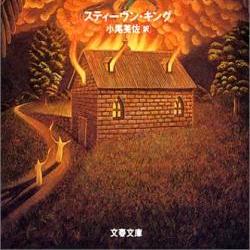

Japanese covers for Stephen King’s IT (4 Volumes) by Shinsaku Fujita
6 notes
·
View notes
Photo

Misery Japanese paperback illustration by Shinsaku Fujita
4 notes
·
View notes
Photo
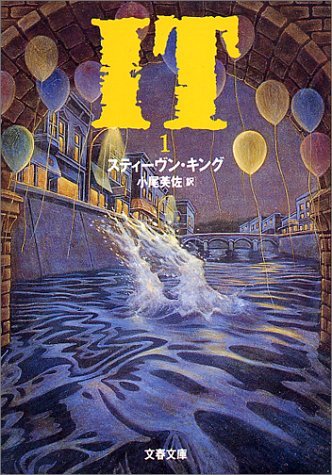



IT by Stephen King
Japanese Book Covers
Illustration by Shinsaku Fujita (藤田新策)
34 notes
·
View notes
Photo

"11-22-63″ fan art by Japanese artist Shinsaku Fujita (*1956).
2 notes
·
View notes
Photo

Joyland by Stephen King Japanese Book Cover Illustration by Shinsaku Fujita
8 notes
·
View notes
Text
List of swordsmanship schools at the end of the Edo period! Dojos where swordsmen such as the Shinsengumi and Takasugi Shinsaku studied
What kind of swordsmanship were the Shishi and Shinsengumi practicing at the end of the Tokugawa shogunate?
A brief summary of the main schools and who studied in them.
Shindo Munen-ryu
Shindo Munen-ryu was founded by Fukui Hyoemon in the Genroku era.
"Peace" was their principle. It was forbidden to solve problems unreasonably with swords, and academics were also emphasized .
Saito Yakuro's dojo, Renpeikan, was famous as one of the three major dojos in Edo at the end of the Tokugawa shogunate.
Who studied the Shindo Munen-ryu?
Egawa Tarozaemon: Shogunate official
Katsura Kogoro: Choshu Domain
Takasugi Shinsaku: Choshu Domain
Inoue Mita: Choshu Domain
Ito Hirobumi: Choshu Domain
Shinagawa Yajiro: Choshu Domain
Nagakura Shinpachi: Shinsengumi 2nd Squad Captain
Fujita Toko: Mito Domain, scholar
Katsura Kogoro was convinced to study this style when he heard that Shindo Munen-ryu swordsmen valued peace and used their swords as little as possible.
He served as the head instructor of the dojo for five years from Kaei 5 to Ansei 4, and his ability was also well documented.
As you can see, the Renpeikan was a dojo with many Choshu clan students.
On the other hand, Nagakura Shinpachi, who is said to have been the strongest in the Shinsengumi, also practiced the same style. However, he went to the Gekikenkan instead of the Renpeikan.
[T/N: Isn’t Serizawa also Shindo Munen-ryu? I guess he didn’t take its teachings to heart 😅]
Hokushin Itto-ryu
The Hokushin Itto-ryu was new style at that time, and was founded by Chiba Shusaku in Edo in the 5th year of Bunsei. Genbukan, one of the three major dojos in the Edo at the end of the Edo period, had more than 6000 students.
Since the Hokushin Itto-ryu was newly established, it adopted a rational tactic that was not bound by the old ways. There were no moves like exaggerated deadly sword attacks. It emphasized actual battle.
Who studied the Hokushin Itto-ryu?
Sakamoto Ryoma: Tosa dappan
Kiyokawa Hachiro: Shonai Domain
Ito Kashitaro: Shinsengumi
Todo Heisuke: Shinsengumi
Sannan Keisuke: Shinsengumi
Yoshimura Kuniichiro: Shinsengumi
Tennen Rishin-ryu
Tennen Rishin-ryu was founded by Kondo Tsukisuke during the Kansei era.
It was the Shinsengumi that made this style suddenly famous. Before, it was despised as a countryside swordsmanship style from Tama.
Most of the main members of the Shinsengumi were from this dojo, the Shieikan.
(On the other hand, I don't hear anything else about this dojo other than the Shinsengumi)
It was a sword that made enemies tremble in Kyoto at the end of the Tokugawa shogunate. The idea was to focus on actual battles and win no matter what kind of tactics you use.
The Tennen Rishin-ryu took their fights seriously even in practice, and some moves involved suddenly slashing at the opponent’s legs.
Hijikata Toshizo kicking up sand to blind the enemy? He was really strong because he was not above using any method (this is not a real move from this sword style, but lol).
At the bloody end of the Edo period, it's no wonder that the Shinsengumi was strong when they used a style that focused on winning.
Who studied the Tennen Rishin-ryu?
Kondo Isami: Commander of the Shinsengumi
Okita Souji: Shinsengumi 1st Squad Captain
Inoue Genzaburo: Shinsengumi 6th Squad Captain
Yagyu Shinkage-ryu
Yagyu Shinkage-ryu was the Tokugawa clan’s style.
It was founded by Yagyu Ishifune Munetoshi.
It’s famous for the mutō (無刀取り) technique, where you can win without having a sword.
Who studied the Yagyu Shinkage-ryu?
Takasugi Shinsaku: Choshu Domain, Licensed
Katsura Kogoro: Choshu Domain
Kyoshin Meichi-ryu
The Kyoshin Meichi-ryu was founded by Momoi Hachirozaemon.
By the time his son Momoi Shunzo inherited the dojo, the Shigakukan became popular as one of the three major dojos in Edo .
In the Kyoshin Meichi-ryu, honor was especially important, and both Momoi Hachirozaemon and Shunzo were very strong swordsmen. Rather, they had strong personalities.
Who studied the Kyoshin Meichi-ryu?
Takechi Hanpeita: Tosa Domain
Okada Izo: Tosa Domain
It’s ironic that the Four Manslayers of the Edo period came out of the Kyoshin Meichi-ryu that emphasized honor.
At least, the famous ones in modern times are Takechi and Okada.
Nodachi Jigen-ryu
Nodachi Jigen-ryu was founded in 1822 by Kanetake Yakumaru as a branch of Jigen-ryu, and was also called Yakumaru-ryu.
It often appeared in the taiga drama Segodon. It’s the one with the strange battlecry, "Kieeeeeeeeeeeeeeeeeeeee!” lol.
It was said to be Satsuma's one-shot deadly sword style, and it was a style that pushed hard with power and spirit.
When training using tree branches, they scream “Kyaaa!!!!!” as they hit.
Their tactic was to jump before their opponent and slash no matter what happens. Don't hold back.
In this aspect, there’s something similar to Tennen Rishin-ryu.
This school was able to play an active role at the end of the Tokugawa shogunate, and had an obsession with slashing, instead of other moves.
As a side note, isn't that a little crazy to shout like that? People have also said that for a long time, and it seemed that even Shimazu Narioki, the lord of the Satsuma Domain, jolted up saying "They're like mad swordsmen".
Certainly, if you didn't know anything about them, you'd be surprised at their sudden scream lol
Who studied the Nodachi Jigen-ryu?
Nakamura Hanjiro: Satsuma Domain
Arimura Tsugusaemon: Satsuma Domain, Seichugumi
Oyama Tsunayoshi: Satsuma Domain, Seichugumi
Arimura Shunsai: Satsuma Domain, Seichugumi
Shinohara Kunimoto: Satsuma Domain
Togo Heihachiro: Satsuma Domain, Admiral
#swordstyle#tennen rishin ryu#hokushin itto ryu#shindo munen ryu#translated#translated from Japanese
17 notes
·
View notes
Text
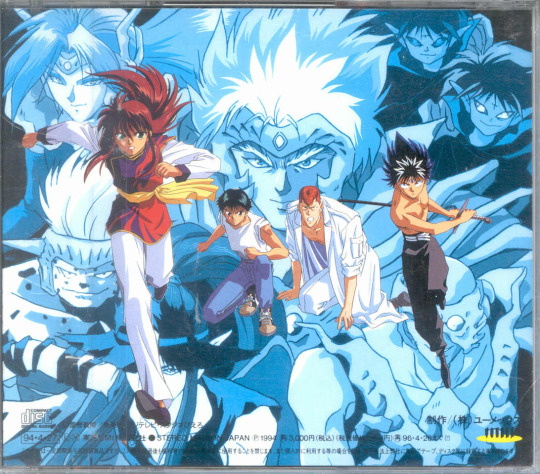
Yu Yu Hakusho: Poltergeist Report released on April 9, 1994.
Studio(s): Studio Pierrot and Movic
Director: Masakatsu Iijima
Producers: Haruo Sai, Ken Hagino, and Naoji Hōnokidani
Score: Yusuke Honma
I'll also list all of the artists involved in making the background art and the key animators! This movie looks incredible and directors tend to get a much bigger cut of the credit than they deserve.
Background Art: Emi Kitahara, Emiko Koizumi, Hideaki Kudo, Hirofumi Shiraishi, Hisae Saito, Hitoshi Nagasaki, Ikuko Ōoka, Kaoru Inoda, Kazuo Ebisawa, Kumiko Nagashima, Masumi Nishikawa, Mio Isshiki, Ryō Kōno, Sadayuki Arai, Sawako Takagi, Shigenori Takada, Shinichi Uehara, Shinobu Takahashi, Shuichi Hirose, Toshiharu Mizutani, Toshiyuki Yoshimura, Yasunari Usuda, Youngil Park, Yuka Kawashima, Yuka Okamoto, Yūko Kobayashi
Key Animation: Akihide Saitō, Chihiro Hayashi, Fuminori Kizaki, Hajime Kamegaki, Hideyuki Motohashi, Hikaru Takanashi, Hiroharu Nishida, Hiromi Niioka, Hirotaka Kinoshita, Hiroyuki Kanbe, Hiroyuki Okuno, Hisahito Natsume, Isao Sugimoto, Junichi Kigawa, Junko Abe, Kari Higuchi , Katsuichi Nakayama, Kazumi Minahiro, Kazuya Kuroda, Kazuyuki Ikai, Kazuyuki Kobayashi, Keiko Shimizu, Kenji Yamazaki, Kunihiko Ito, Mamoru Hosoda, Mamoru Kurosawa, Masahito Yamashita, Masaki Hosoyama, Masayuki Fujita, Mayumi Hirota, Munenori Nawa, Naoyuki Owada, Osamu Nabeshima, Satoru Iriyoshi, Satoshi Fukushima, Shinji Seya, Shinsaku Kōzuma, Shuji Kawakami, Shunji Suzuki, Susumu Yamaguchi, Tadakatsu Yoshida, Tadashi Abiru, Takashi Yamazaki, Takayuki Gorai, Takenori Mihara, Takuya Satō, Toyoaki Shiomi, Yasunari Nitta, Yoshiaki Tsubata, Yoshinori Kanada, Yoshiyuki Kishi, Yuichi Endo, Yuko Kusumoto
54 notes
·
View notes
Text
Le long d'un reflet de Shinsaku Fujita
[Chronique petite Enfance - Artemissia] Mon avis sur Le long d'un reflet de Shinsaku Fujita. Un très joli petit livre.
Une petite fille et son grand frère partent explorer leur petite ville qui s’étend le long d’un cours d’eau. Ils admirent les façades des maisons qui se mirent dans l’onde, et observent chaque remous à la surface de l’eau. Car leur ville est certes minuscule, mais son reflet la fait paraître gigantesque ! Le long d’un reflet de Shinsaku Fujita Album : 40 pages Tranche d’âges : 3 années et plus…
View On WordPress
0 notes
Photo


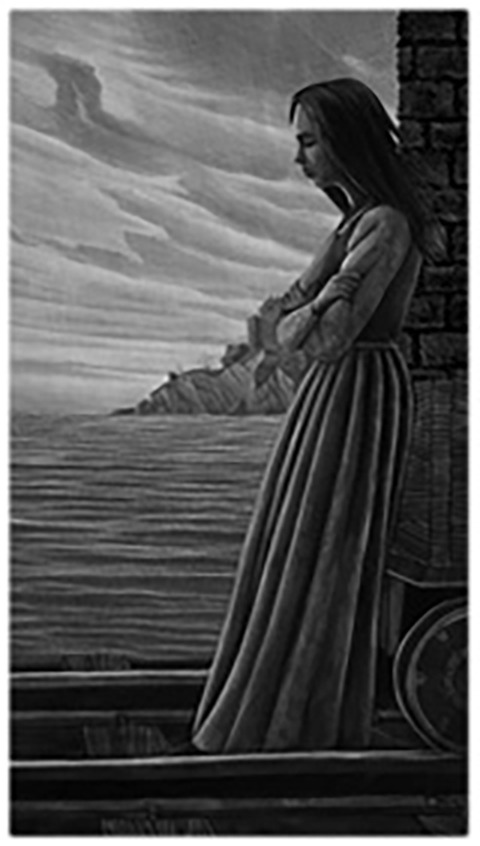
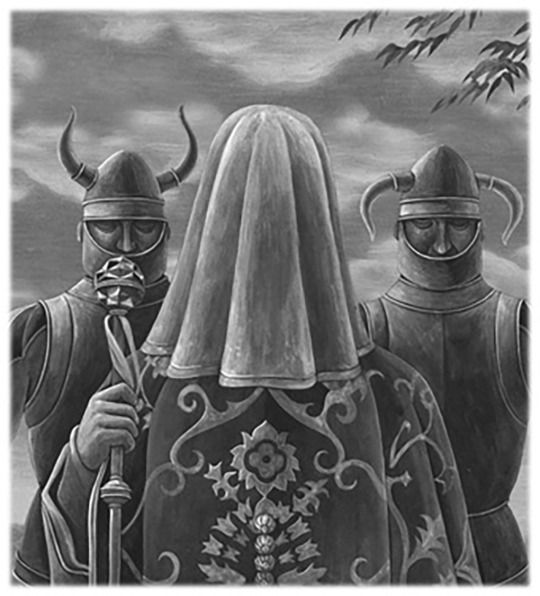
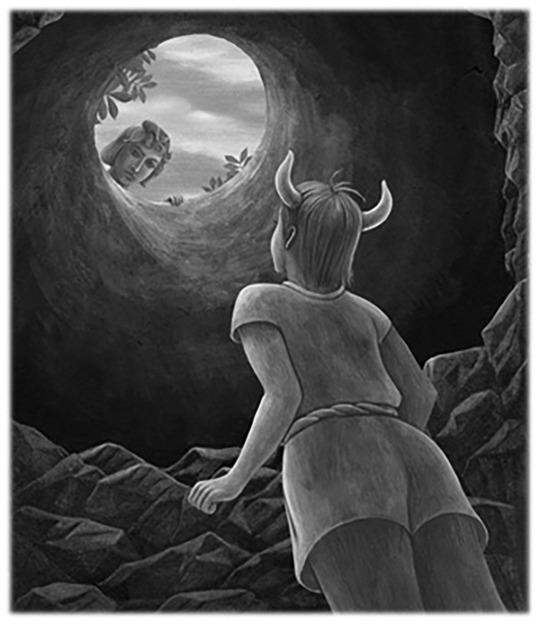


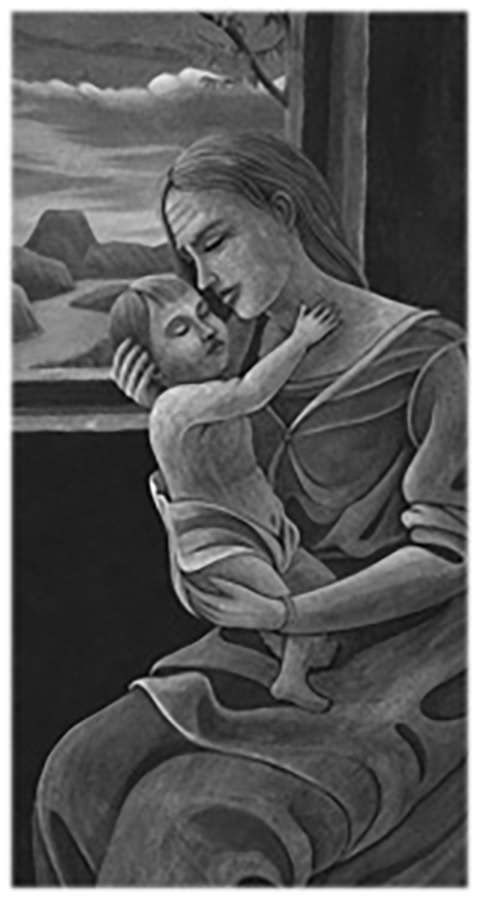
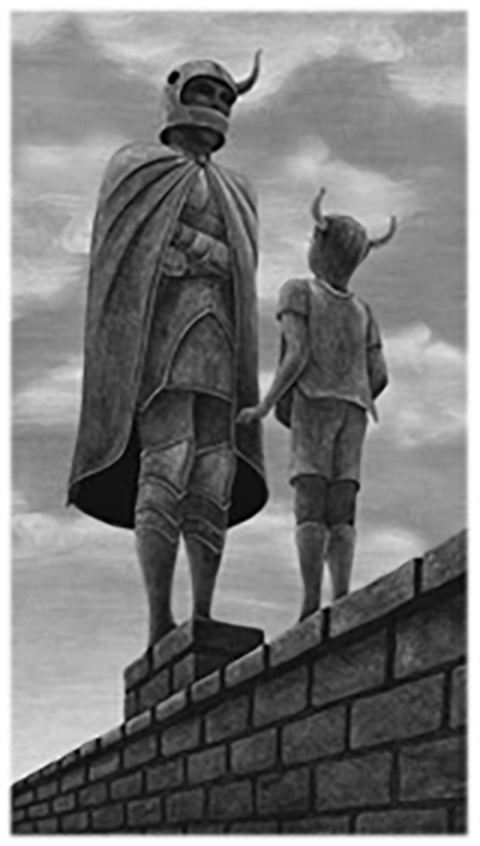
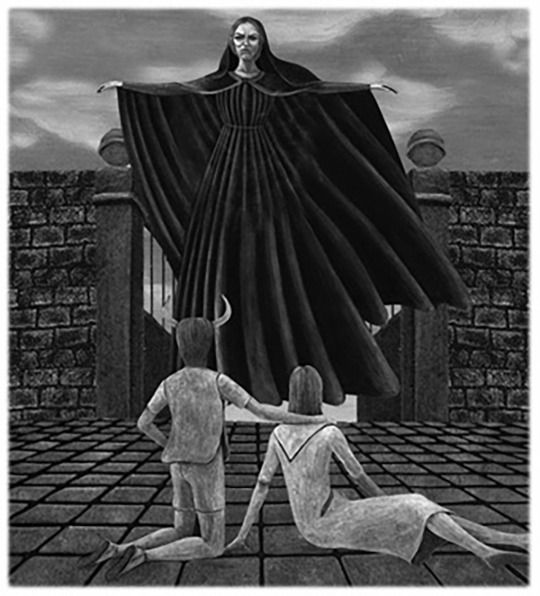
Before obtaining a book deal with Kodansha in 2004, Miyuke Miyabe’s novel adaptation of ICO, entitled ‘Kiri no Shiro’ (Castle in the Mist), was first published as a weekly serial on the Shūkan Gendai magazine between May 2002 and May 2003. For the occasion, Miyabe teamed up with preeminent illustrator and long time collaborator Shinsaku Fujita, whose artworks adorned the covers of most her every book.
Because Miyabe took certain liberties when deviating from the original story and concept, Fujita’s illustrations do reveal a host of characters and events finding no parallel with the game experience itself. Other drawings produce highly evocative reproductions of some its most emblematic moments, demonstrating not only firsthand knowledge but a veritable affinity for Fumito Ueda’s debut work. Departing from his habitual style, quite possibly due to ICO finding its own references within ancient and contemporary Italian art, the presence of the Italian renaissance masters is strongly felt in each of the seventy illustrations he created. It is fascinating how the artist restructures elements of the story to fit the period’s composition of prevalent religious icons, such as the Madonna and the Child or the Dead Christ. Together, they display an extraordinary reverence for Masaccio, Mantegna, Titian and Botticelli, to mention only a few.
Fujita earned a reputation in Japan for illustrating a variety of book editions, most notably the Japanese translations of Stephen King’s and Dean Koontz’s horror paperbacks. He also famously produced the artwork for a special edition of Edogawa Ranpo’s popular sleuth novel series ‘The Boy Detectives Club’. Japanese horror game enthusiasts will recognize his brushstroke from the original Siren game cover art, as well as that of Famitsu’s ‘Silent Hill Perfect Navigation Book’. Perhaps an even lesser known fact is that Fujita also created spellbinding cover for the 2001 Playstation edition of Yoshitaka Nishida’s RPG maker cult classic, ‘Palette: Forget me Not'.
Because these illustrations were a requirement that needed to be met for the publishing of a novel in Kodansha’s Modern Weekly magazine, as is quite customary in the case of such serializations, they were never again featured in any of the different editions of Miyabe’s book. If I am allowed a personal closing remark, I must say that I was astounded to find no mention whatsoever of these works anywhere online, even in dedicated wikis. I lived all these years assuming someone else from among the ever-inquisitive community had picked this up - apparently, that was not the case. Two decades too late, I nevertheless uploaded the complete gallery of illustrations to a Flickr album for your perusal.
#ico#fumito ueda#castle in the mist#miyuki miyabe#novel#illustration#shinsaku fujita#artwork#rennaisance art
214 notes
·
View notes
Text
Cast and characters for some BSP plays
in chronological order
BSP「壬生狼」
“Miburo” / “The Wolves of Mibu” (2014.1)
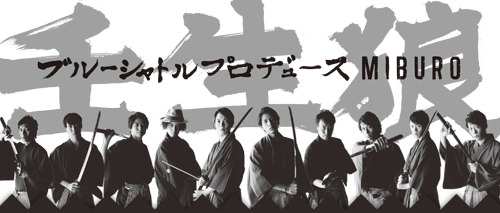
Info: site, DVD, PV
CAST:
Matsuda Gaku - Hijikata Toshizou
Tabuchi Noriaki - Okita Souji
Aoki Takeshi - Kondou Isami
Tokura Yuuki - Serizawa Kamo
Kanegae Kou - Yamanami Keisuke
Yamamoto Masahiro - Saitou Hajime
Tanaka Naoki - Toudou Heisuke
Kitaguchi Shouhei - Harada Sanosuke
Hirayama Shou - Nagakura Shinpachi
Yamasaki Touma - Tachikawa Chikara
Umebayashi Ryouta - Katsura Kogorou
Yamamoto Kenji - Sakamoto Ryouma, etc.
Director: Ootsuka Masashi
Music: Wada Shunsuke, Matoda Hideya
Choreography: Kakitani Yui
BSP「幸村」-真田戦記-
“YUKIMURA - Sanada Senki” / “YUKIMURA - Sanada’s War History” (2015.3,5)

Info: site, DVD, PV
CAST:
Matsuda Gaku - Sanada Nobushige (a.k.a. Yukimura)
Tabuchi Noriaki - Tokugawa Ieyasu, Yodo-dono
Tanaka Naoki - Sarutobi Sasuke
Umebayashi Ryouta - Mouri Katsunaga
Aoki Takeshi - Gotou Matabei
Ishida Naoya - Toyotomi Hideyori
Yamamoto Masahiro - Chousokabe Morichika
Kanegae Kou - Akashi Teruzumi
Yamamoto Kenji - Oono Harunaga
Kitaguchi Shouhei - Tokugawa Hidetada
Kuroda Yousuke - Kirigakure Saizou
Nakauchi Tenma - Sanada Daisuke
Ogawa Katsuya - Sanada Nobuyuki, etc.
Director: Ootsuka Masashi
Music: Wada Shunsuke
Choreography: Kakitani Yui
Theme Song: "Glorious Death"
Lyrics: Ootsuka Masashi; music: Wada Shunsuke; vocal: Niira Etsuko
BSP「雪の女王」(BSP版)
“Yuki no Joou” / “The Snow Queen” (BSP edition) (2015.9-11)

Info: site, DVD, PV
CAST:
Hanafusa Chika - Karen
Terashita Remi - Anna
Matsuda Gaku - Chris
Aoki Takeshi - Carl
Umebayashi Ryouta - Gert
Ishida Naoya - Abel
Hara Kouki - Elmer
Tabuchi Noriaki - Chris' Shadow
Yamamoto Masahiro - Carl's Shadow
Tanaka Naoki - Gert's Shadow
Harada Kenji - Abel's Shadow
Shin Masatoshi - Elmer's Shadow
Yamamoto Kenji - the nonexistent
Director: Ootsuka Masashi
Music: Matoda Hideya
Choreography: Kakitani Yui
BSP「 真田幸村 」
“Sanada Yukimura” (2016.3-4)
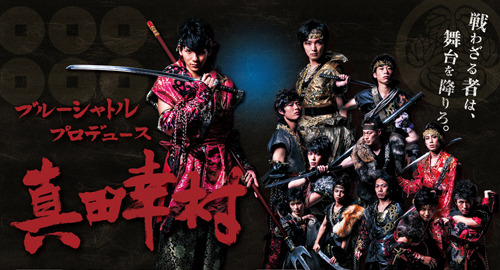
Info: site, DVD, PV
CAST:
Matsuda Gaku - Sanada Nobushige, Takeda Shingen
Tabuchi Noriaki - Tokugawa Ieyasu, Yodo-dono
Umebayashi Ryouta - Uesugi Kagekatsu, Sanada Nobuyuki
Tanaka Naoki - Sarutobi Sasuke, Sanada Daisuke
Ishida Naoya - Toyotomi Hideyoshi, Sen-hime
Aoki Takeshi - Gotou Matabei, Miyoshi Seikai Nyuudou
Kanegae Kou - Oda Nobunaga, Mochizuki Chiyome
Yamamoto Masahiro - Toyotomi Hideyori, Kirigakure Saizou
Kuroda Yousuke - Nezu Jinpachi, Chousokabe Morichika
Ogawa Katsuya - Mochizuki Rokurou, Mouri Katsunaga
Yamamoto Kenji - Sanada Masayuki, Tokugawa Hidetada
Tokura Yuuki - Hattori Hanzou, Oono Harunaga, etc.
Director: Ootsuka Masashi
Music: Wada Shunsuke
Choreography: Kakitani Yui
BSP「龍の羅針盤」
��Ryuu no Rashinban” / “Dragon Compass”
第一部 幕末死闘篇 (2016.11-12)
Part 1 - Bakumatsu shitou hen / Bakumatsu death battle
第二部 維新回天篇 (2017.2)
Part 2 - Ishin kaiten hen / The changing world of the [Meiji] Restoration

Info: site, DVD1, DVD2, PV, OP dance part 1, part 2
CAST:
Matsuda Gaku - Sakamoto Ryouma
Tabuchi Noriaki - Thomas Blake Glover
Umebayashi Ryouta - Katsu Kaishuu
Ishida Naoya - Iwasaki Yatarou
Aoki Takeshi - Takechi Hanpeita, Ookubo Toshimichi
Yamamoto Masahiro - Takasugi Shinsaku
Kuroda Yousuke - Saitou Hajime
Ikenoue Yoritsugu - Gotou Shoujirou
Nakauchi Tenma - Itou Hirobumi
Shin Masatoshi - Kondou Choujirou
Fujita Kyouhei - Mochizuki Kameyata
Sawada Makoto - Murata Shinpachi
Yamamoto Kenji - Saigou Takamori
Part 2 only:
Tanaka Naoki - Nakaoka Shintarou
Kanegae Kou - Katsura Kogorou
Tokura Yuuki - Tokugawa Yoshinobu
Director: Ootsuka Masashi
Music: Wada Shunsuke, Matoda Hideya, Toyoda Kensuke
Choreography: Kakitani Yui
Theme Songs:
Part 1: "Tasogare no Umi no Ryuu" 「黄昏の海の龍」
Lyrics: Ootsuka Masashi; music: Wada Shunsuke; vocal: Niira Etsuko
Part 2: "Suiheisen ni Kieta Rashinban" 「水平線に消えた羅針盤」
Lyrics: Ootsuka Masashi; music: Toyoda Kensuke; vocal: Niira Etsuko
#Matsuda Gaku#cast list#BSP Yuki no Joou#BSP Sanada Yukimura#BSP Yukimura Sanada Senki#BSP Miburo#BSP Ryuu no Rashinban
16 notes
·
View notes
Photo

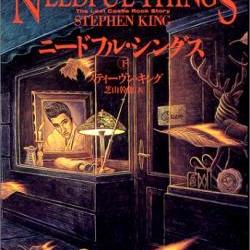
Japanese cover for Needful Things by Shinsaku Fujita
10 notes
·
View notes